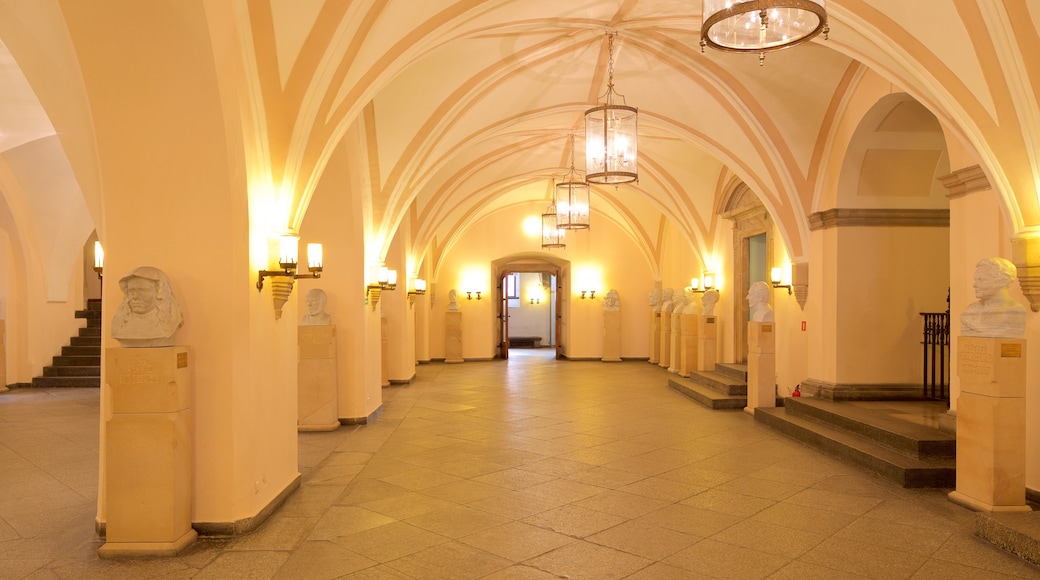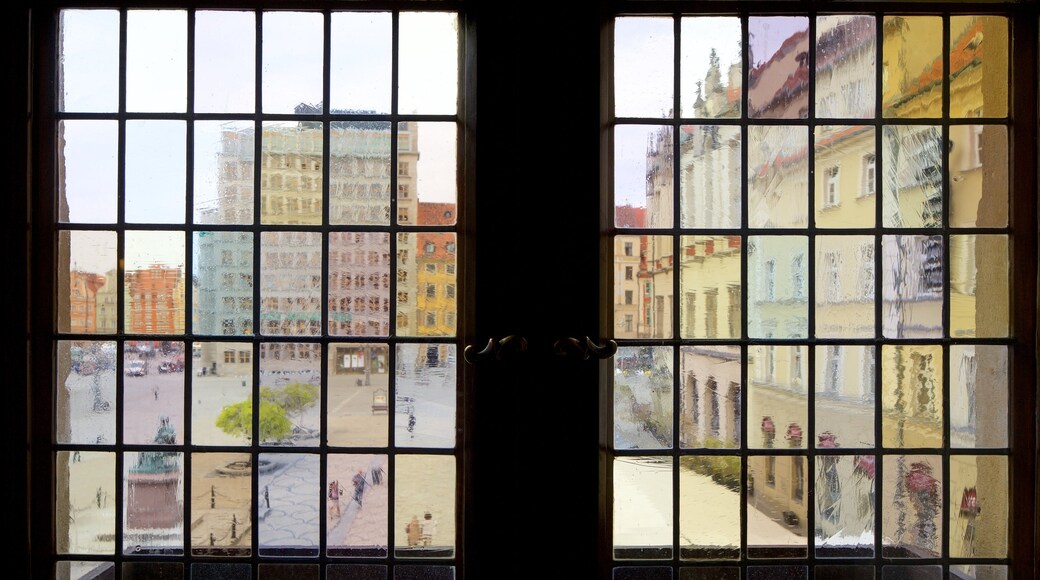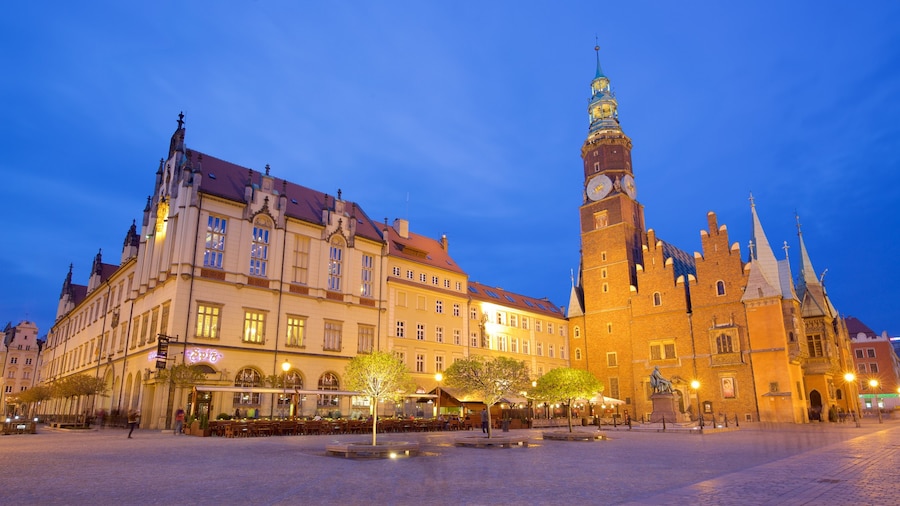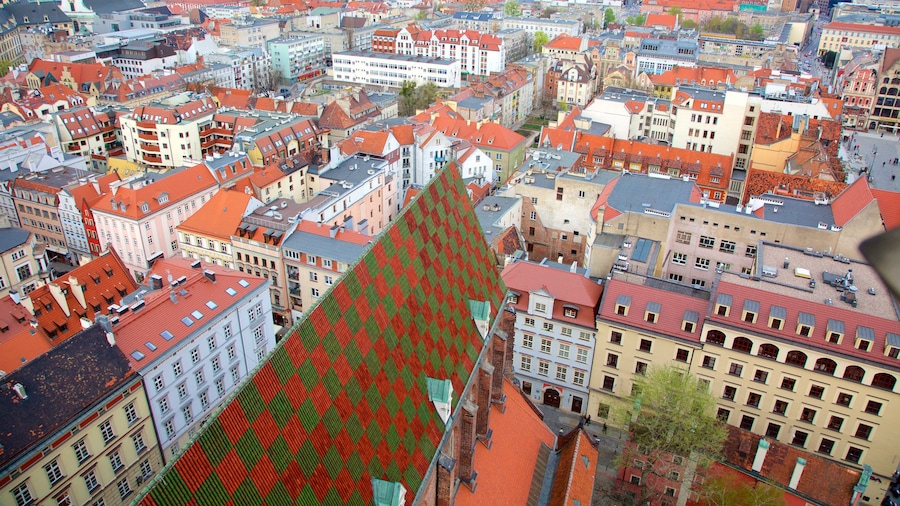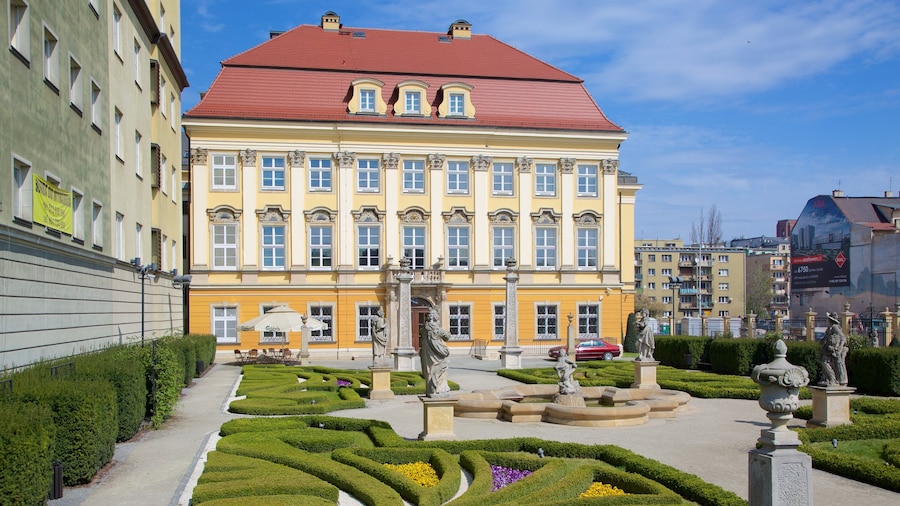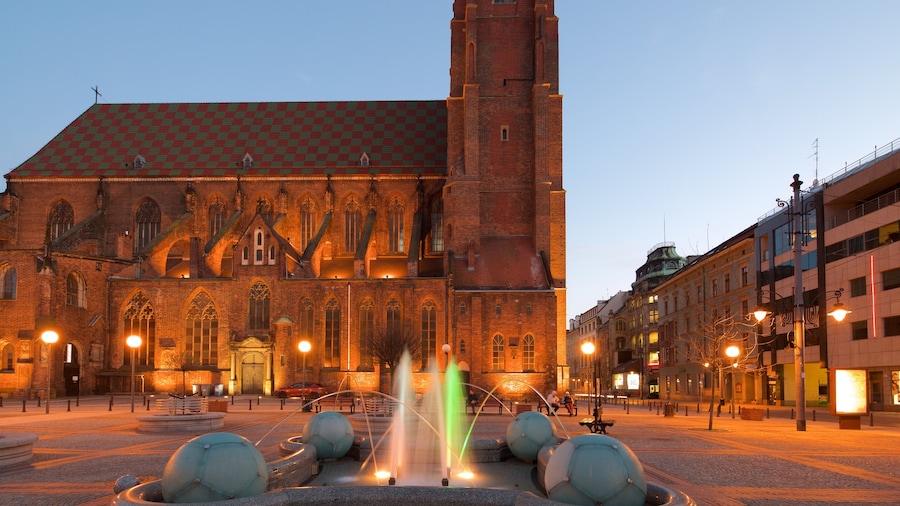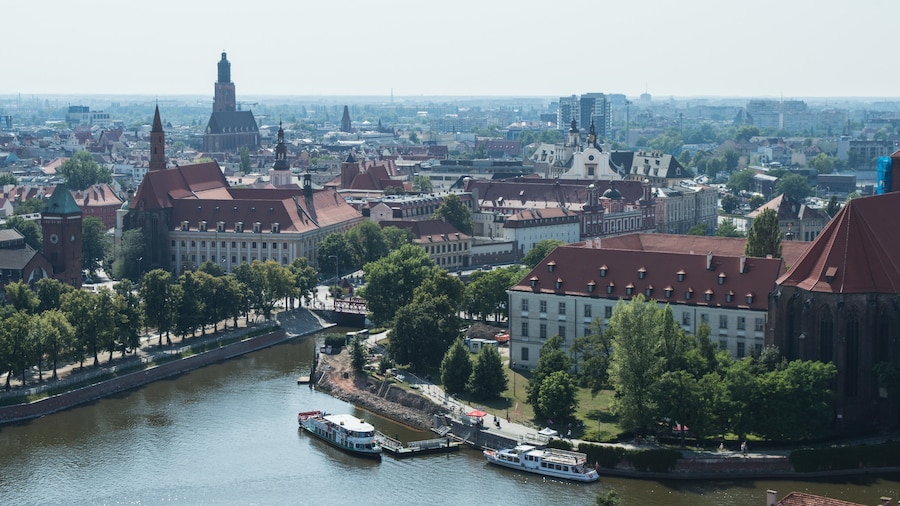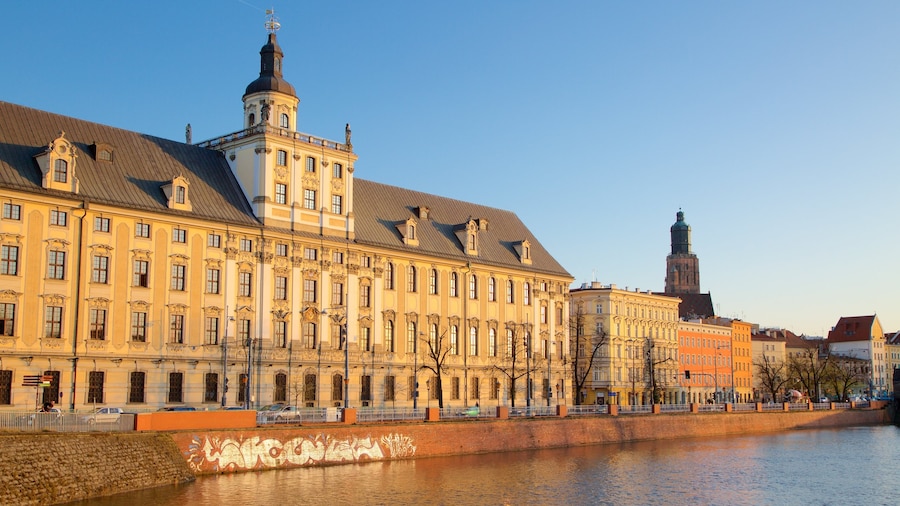The centerpiece of Market Square, this stunning Gothic building is an important part of the city’s cultural heritage, housing an art museum and historic beer cellar.
Wroclaw Town Hall is one of Poland’s largest and most intriguing town halls. Its construction spanned several centuries, resulting in a façade that reflects a mixture of different architectural styles. Admire the building’s distinctive exterior, check out the exhibits housed at the art museum inside and have a drink in its popular cellar bar.
The Town Hall was built in the 13th century, with various additions and renovations slowly being made over the following 200 years. Look up at its 216-foot (66-meter) high tower, which continued to be decorated for over a century after the building was initially completed in 1504. The hall played an important role in city life until the early 20th century, housing the Town Council and numerous merchants’ stalls. Today, the building serves as home to the Museum of Bourgeois Art and is also an interesting architectural attraction in its own right.
Inspect the hall’s eastern façade, which reflects three different periods in the building’s construction. The early Gothic elements on the right indicate the oldest part of the façade, while the central section was designed in the 16th century. The ornate left segment is constructed in the early Renaissance style. Check the time on the 16th century astronomical clock, which also displays the phases of the moon.
Walk around the ornate southern façade. Designed in the 16th century, this side of the building is the entrance to the hall’s famous cellar bar, Piwnica Swidnicka. Dating back to the early 14th century, Piwnica Swidnicka is known as one of the first beer cellars in Europe. If you’re ready for a break, stop here for a traditional meal or a drink.
The building’s western façade serves as the entrance to the Museum of Bourgeois Art. Don’t miss this collection of drawings, paintings and graphics dating from the 19th and 20th centuries.
Wroclaw Town Hall is located in Wroclaw’s Market Square, where it can be reached by bus or tram. Admission to the permanent exhibitions at the Museum of Bourgeois Art is free, but you need to pay a fee to visit any temporary exhibitions or take a guided tour. The museum is open Wednesday to Sunday.

